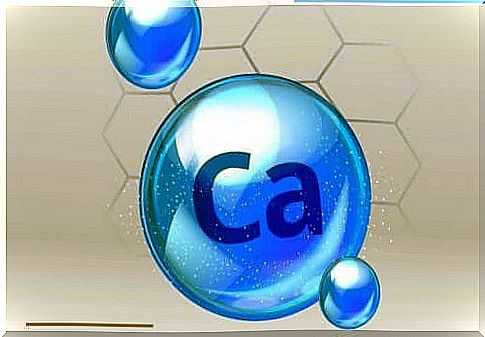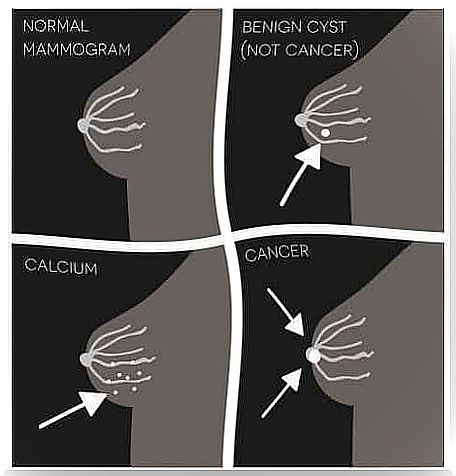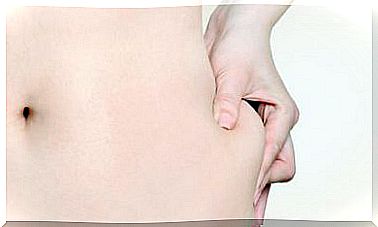Breast Calcifications: Symptoms, Causes And Treatments
In most cases, breast calcifications are not alarming. They are almost always benign and do not involve any consequences for health. It is only in rare cases that they represent a cancerous or precancerous condition.

Breast calcifications are calcium deposits that form in breast tissue. They are not palpable and do not cause any particular type of discomfort. Often, they are seen by chance during a routine examination. In almost all cases, they are benign, but it is advisable to monitor their progress.
It is estimated that 50% of breast cancer cases are associated with breast calcifications. This does not mean that 50% of breast calcifications represent a signal for cancer. Because, in most cases, they have no connection with this disease.
However, if breast calcifications possibly herald the presence of cancer, it is very important to have a regular mammogram in order to detect, evaluate and monitor them.
What do breast calcifications correspond to?

Breast calcifications are small deposits of calcium that form in one or both breasts. It is one of the most frequent radiological discoveries. During the mammogram, we can perceive them as small white spots or white dots. Usually, they are detected in women over 50.
In addition, breast calcifications are subject to different classifications. Depending on their distribution in the breast tissue, they are divided as follows:
- Diffuse. They are distributed throughout the breast, randomly.
- Regional. They are located in an area not exceeding 2 cm.
- Grouped. When there are more than 5 in an area no larger than 1 cm.
- Linear. They are aligned, and generally follow the path of a conduit.
- Segmental. When the deposits are in a duct or its branches. In this case, they are very suggestive of cancer.
Depending on the level of risk they present, breast calcifications are classified as follows: typically benign, indeterminate and highly suspect of malignancy. To determine to which group they belong, we examine their number, their distribution as well as the associated anomalies.
Symptoms
As we have already pointed out, breast calcifications do not produce any symptoms. They are not even palpable to the touch. It is therefore necessary to perform a mammogram to detect their presence. During the examination, it is possible to determine the existence of two types of breast calcifications:
- Macrocalcifications. They are visible as large spots or white lines during the mammogram. They rarely correspond to a precancerous or cancerous condition. Usually, they only receive minimal follow-up.
- Microcalcifications. They appear as white particles, very fine, similar to a grain of salt. Usually, they are not cancerous, but have specific characteristics that need to be looked at more carefully.
Often, if breast calcifications are suspicious, a second, larger mammogram is done to rule out or confirm the suspicions. In the latter case, a biopsy is most often ordered. But, in all cases, a mammogram is an exam that must be repeated periodically.
Causes of breast calcifications

The first thing to clarify is that breast calcifications are not the consequence of consuming calcium. They are due to the different changes that occur during the passage from one developmental stage to another in the mammary glands. Therefore, their composition changes at different ages.
In most cases, these calcifications are the consequence of non-carcinogenic disorders, such as breast cysts, cell secretions or residues, previous breast surgery, injury, or calcification of the skin or blood vessels.
It is only in a minority of cases that there are serious problems such as breast cancer, ductal carcinoma in situ or fibroadenoma.
On the other hand, it is essential to specify that to obtain reliable results during a mammogram, it is advisable to avoid the use of creams, deodorants or talcum powder for the skin on the day of the examination. These substances can indeed be deceptive.
Treatments
Breast calcifications are not a disease or a disorder in themselves. They therefore do not require treatment as such. The measures to be taken depend on the degree of suspicion of the cancer. If they are considered to be moderately suspicious, a check will be carried out every 6 months.
If the suspicion is stronger, a biopsy will be necessary. You should know that 80% of biopsies performed for microcalcifications give a negative result. Only in 20% of cases, they indicate the presence of cancer. In this case, there is rarely an invasion of the tissues.
Finally, breast calcifications are more suspicious when they are smaller. Or that they have dissimilar shapes, that they are grouped, divided into segments and vary over time.









